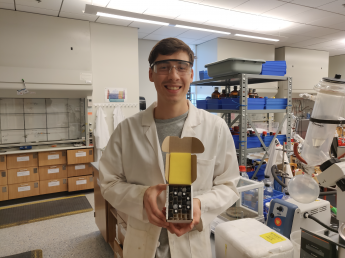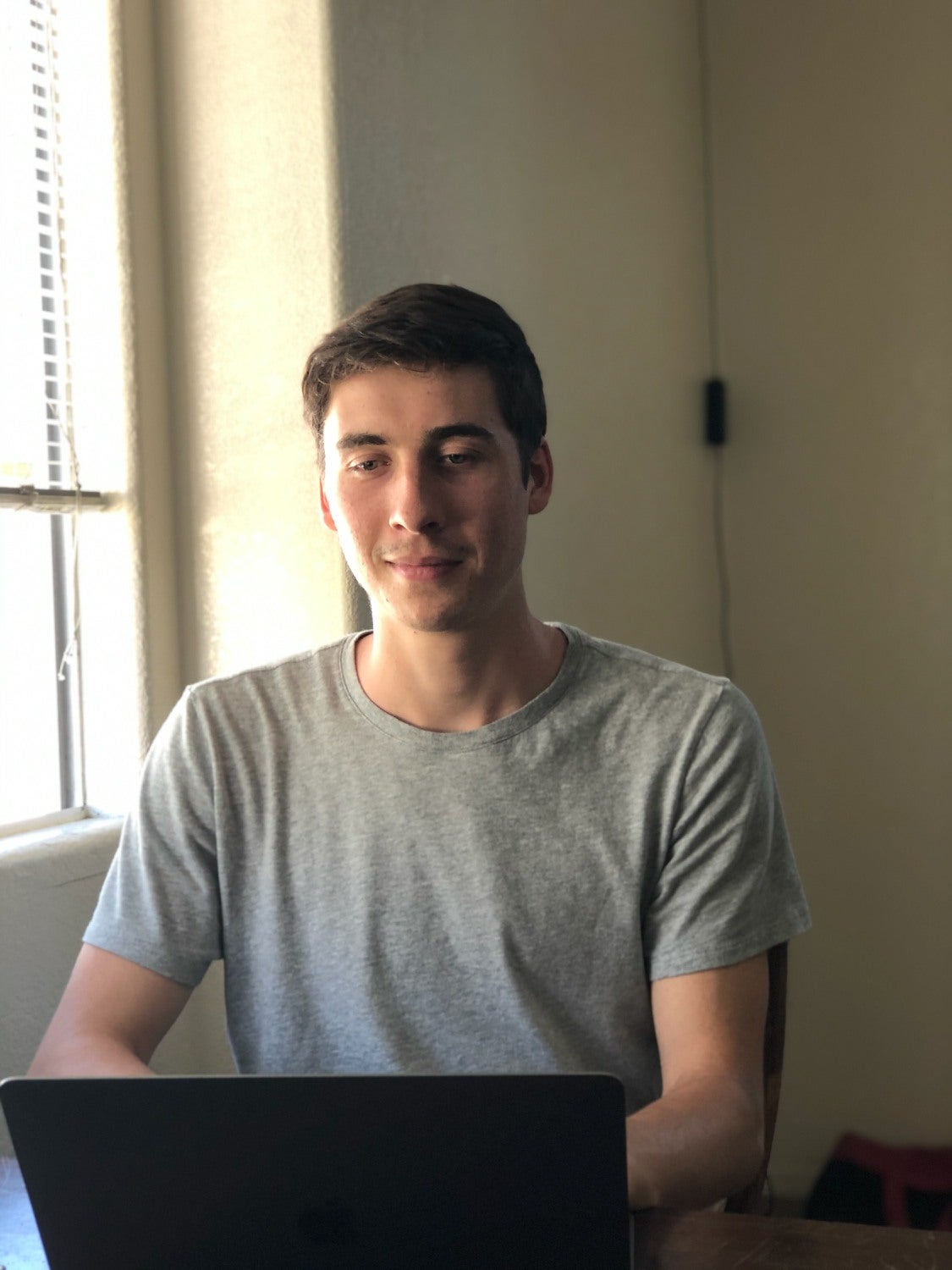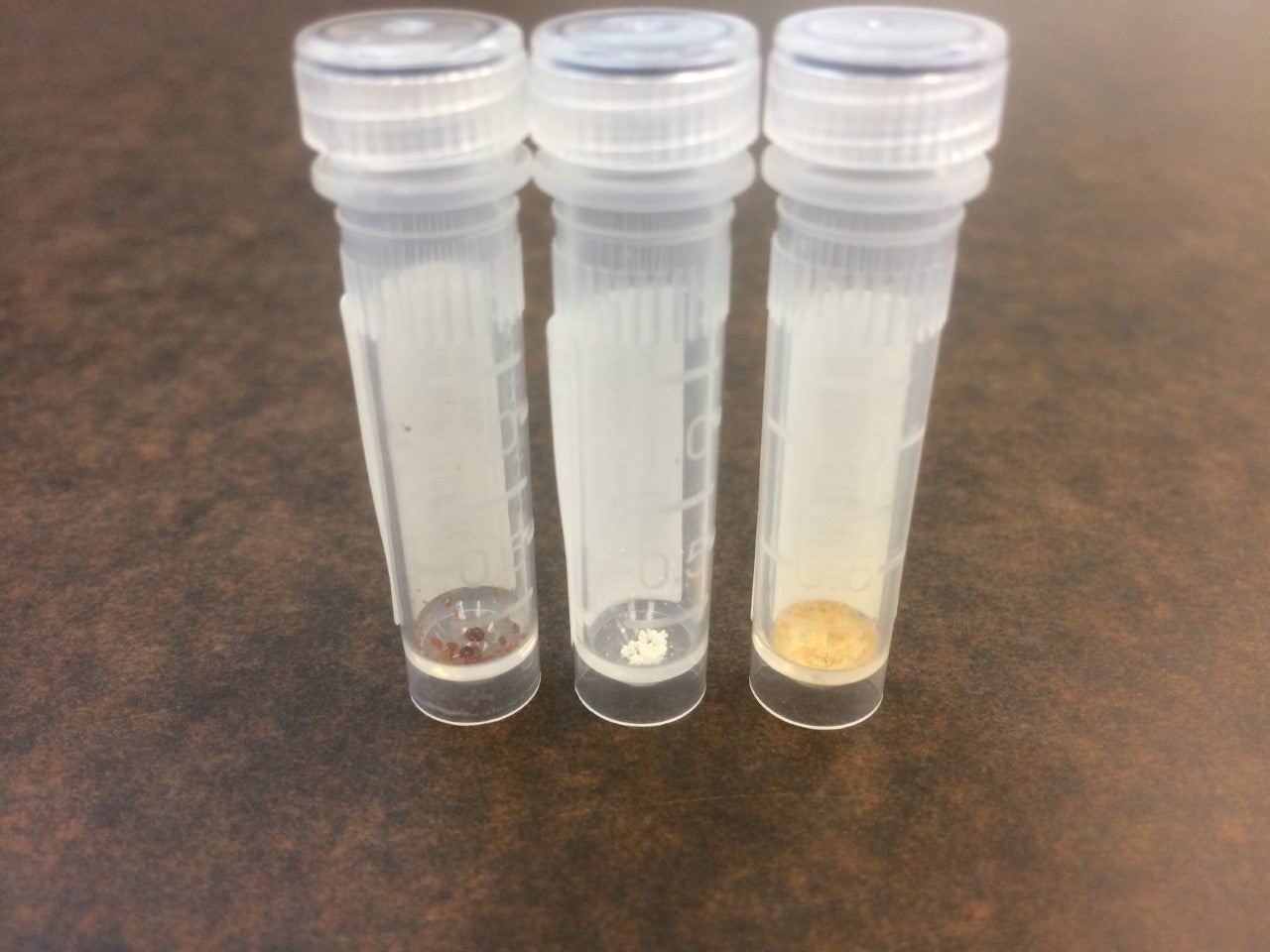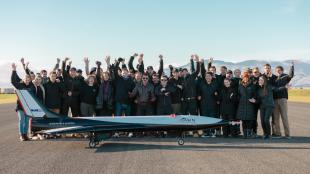Searching for the Key: Student, Professor Study Possible COVID-19 Treatments

As scientists race to find treatments for COVID-19, a Cal Poly student and professor team are playing a small role in the process.
“It was an opportunity that I didn’t see coming,” said Scott Eagon, a professor of chemistry and biochemistry.
Eagon works in infectious diseases, and had followed the emergence of the novel coronavirus, known as SARS-CoV-2. In March, he saw a paper published by a team in Germany that showed the crystal structure of one of the virus’s proteins.
“Viruses have their own proteins to infect the cell and make copies,” Eagon explained. “Once you know the structure of a protein, it allows scientists to design a medicine to treat it.”
Eagon explained that a protein is like a door, and an antiviral medicine can act like a key that breaks off in the lock, keeping the door from functioning.

“Now that we have a map of the keyhole, the question becomes how do we find a key,” Eagon said.
Eagon reached out to the head of the German team, Rolf Hilgenfeld at the University of Lübeck, to see if there was an opportunity for collaboration.
“Whenever there’s a pandemic like this, scientists from all over the world try to attack the disease from different angles,” Eagon said. “The hope is that, with everyone trying different methods to attack the pathogen, the sooner someone can find a successful treatment.”
Eagon also reached out to one of his students, McClane Howland, over Spring Break to see if he’d be interested in using their computational resources to find molecules that could act like a key in the door— something that could shut down the virus’ ability to replicate.
Howland, a computer science student with interests in medical research who had previously assisted Eagon with malaria research, rose to the challenge.
Howland and Eagon knew that trying to run millions of potential matches on one normal computer could take years.
So Howland wrote a computer program that could run thousands of codes simultaneously, distributing the work across about 30 powerful computers in the Massively Parallel Accelerated Computing (MPAC) laboratory.
Howland, who ran the program remotely, finished the testing in about three weeks.
“When you have 30 or so computers working together, there’s a lot that can go wrong,” Howland said. “One computer can decide not to respond, or crash, and you have to figure out how to manage that and screen all the compounds. It was tricky.”
Howland and Eagon sorted for molecules that could possibly work in an oral treatment for COVID-19, like a pill, which would be more readily available to people around the world. They also looked for molecules that were commercially available, so they could be purchased and screened in a timely manner.
The pair identified the top 28 best potential matches and began ordering them from companies around the world. As of mid-May, they have received, screened and catalogued those compounds and are preparing to ship them to Germany for testing against the virus.
“The most satisfying part of this is that I could give a student this opportunity for real-world experience,” Eagon said.

The goal of the project is to identify a compound that shows promise in treating COVID-19, but there’s no guarantee that this project will get that result, Eagon cautioned.
“We do have the potential to find something that works, but nothing will be available until it’s been thoroughly tested in clinical trials,” he said.
But even if the project doesn’t identify a promising compound, both Eagon and Howland said their project was worth a shot, as it will help add a piece to the puzzle.
“Hundreds of groups of scientists are working around the world and we’re a small part of that effort,” Eagon said. “Anything we can do helps.”


